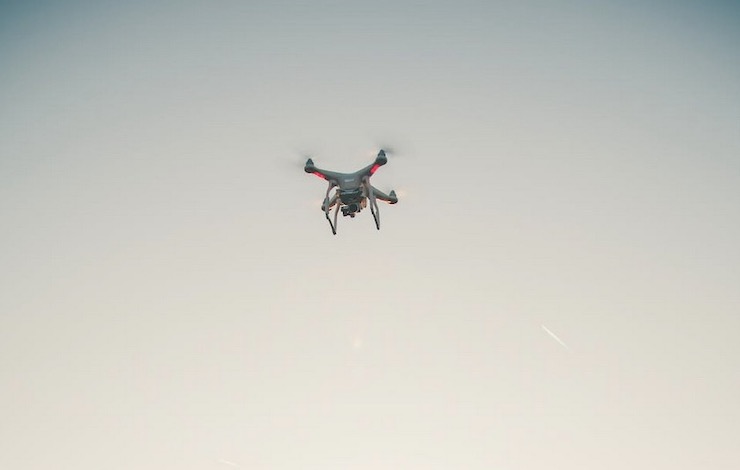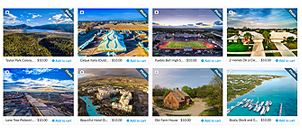Are Remote Aerial Package Deliveries Worth All the Hype?

Read any news story about the drone industry these days and you’ll likely hear about the efforts of mass retailers like Walmart and Amazon to promote remote deliveries of their store goods with drones. But what you may not hear – amid all the hype and hoopla – is how troubled – indeed, faltering – so many of these efforts have become.
Amazon, which launched its Prime Air service with great fanfare more than a year ago in two small towns – Lockeford, CA, and College Station, TX – has made just 100 deliveries to date, according to inside sources. And Walmart, which boasts 36 store outlets in 6 states making deliveries to nearby suburbs, has made just 6,000 deliveries over a much longer period. These are paltry numbers, to put it mildly.
Part of the problem, quite obviously, is the regulatory climate. The Federal Aviation Administration (FAA), which establishes the rules governing use of national airspaces by aircraft, including drones, has been reluctant to allow these and other companies to fly at long distances over populated towns, and to do so without remote piloting and rigorous flight monitoring.
The main reason is safety and liability. The FAA, based in part on Amazon’s past shaky safety record, still fears that package delivery drones are an accident waiting to happen, and routinely denies requests for waivers and exemptions from the mass retailers and the drone companies assisting them.
Amazon, in fact, is under such strict FAA oversight that it takes literally hours for the company to transport its store goods, one delivery at a time. The FAA has imposed mandatory safety stops at each state and local road that Amazon’s drones must cross to reach their final destination. This is hardly the premium service that loyal Amazon customers had bargained for.
In the case of Walmart, even expedited deliveries still require the presence of a store employee at the customer’s home or office to physically oversee the package release. With such a cumbersome delivery process, no wonder so few customers seem eager to participate.
A related problem is technology. Drone batteries have limited storage capacity which means the aircraft can fly continuously for little more than 20-30 minutes – for “last mile:” deliveries to customers living in the vicinity of a store outlet. But there’s also the question of noise. In remote areas, the mechanical buzzing of a single low-flying drone may not pose much of a nuisance, but in more populated areas, it often does. In recent months, residents of Glendale, AZ – one of Walmart’s drone hubs – have complained to the company about their drone deliveries, prompting the company to issue a public apology and to promise that it would find a solution but it’s unclear – short of new muffling technology – that one actually exists, short-term.
Another problem is weather conditions. Some drones can survive light rain, but heavier downpours can ground an aircraft. A larger problem is the wind, which can make drone flying precarious even in sunny weather. Uber Eats, which once promised to join the remote delivery bandwagon, has reversed course. Its CEO says the company went to school on the fledgling efforts of other companies and decided drones presented too many problems. The company is sticking to road vehicles.
In theory, some companies may one day enjoy greater success. Zipline – which has the best safety and performance record of all current drone delivery companies – is planning to fly and hover at a higher altitude – 330 feet, near the FAA’s permissible ceiling of 400 feet for drone flights. The company also claims to have designed its drones to eliminate propeller noise. (“As quiet as a gentle rustling of leaves,” the company boasts). Zipline is just getting started and it remains to be seen if noise complaints will be minimized.
Drone companies operating overseas with fewer regulatory restrictions may not be facing the same problem. Wing, an offshoot of Google’s parent company, Alphabet, claims to have conducted thousands of delivery flights in Australia, where the government has supported drone development for years. The country has large expanses of sparsely inhabited territory and drones can fly freely almost everywhere, but not yet in major cities.
Regulatory and technological issues aside, the real problem facing aerial package delivery operations over the long-term may be financial: How to make these operations profitable – but still affordable. A report by the McKinsey Corporation last December argued that the current “last mile” delivery model – flying one remotely-piloted drone at a time, in response to random customer requests for a lightweight store item or two – wasn’t sufficiently “scalable.”
The report compared the average costs of delivery by drone to those conducted by road vehicles. It turned out that drone deliveries were significantly more expensive. Yet, in nearly all cases, companies were still charging their customers the same small delivery fee (for example, $3.99). Beyond the pilot test phase, it’s simply not a viable model, McKinsey concluded.
What’s the solution? McKinsey suggests allowing companies to fly multiple drones that can make continuous deliveries along the same route – and at much longer distances. That could require the establishment of autonomous drone “ports” that can recharge the aircraft without requiring them to return to home base. There is already some movement in this direction – for example, in Florida, where the state legislature recently passed a law to allow for the establishment of drone docking stations wherever they might be needed. States have the advantage over the FAA in this matter because they possess exclusive legal authority over where aircraft – including commercial airplanes and helicopters – can land and launch. It’s only when drones are airborne that the FAA can move to “pre-empt” state and local authority, though it rarely has so far.
In the end, it will likely be the consumer that decides the future of remote aerial package delivery. Polls suggest that only a small minority of most Americans are aware of what drones are and what they can do. The idea of using drones for basic aerial surveying and mapping or to enhance law enforcement, conservation and humanitarian rescue missions is quite popular among those with a high degree of awareness. But support for drones to support retail delivery is low – the lowest of any drone application, in fact,
And drone retail deliveries have barely gotten underway. How will local residents react if and when the sky overhead is filled with dozens and even hundreds of drones criss-crossing their communities at all hours to deliver goods to privileged store customers too lazy to shop for them, or too impatient to wait for a courier to deliver them? Many industry observers, like many retailers, are beginning to have their doubts about this entire enterprise. A tipping point may be coming soon. The ambition of some retailers to conduct low-cost, speedy and sustainable store deliveries on a mass scale that can reduce congested road traffic and enhance customer satisfaction is a noble one; but it’s running up against a host of obstacles that are proving difficult to resolve. Drones can do many things well – indeed, some things, extremely well. But those they do poorly may not be worth investing in.
|
Previous Drone News:
« Chile and Brazil Are Fueling Latin America’s Surging Drone Industry
Tom Brady Knocks a Drone Out of the Air from a $300 Million Dollar Yacht With Mr. Beast »



